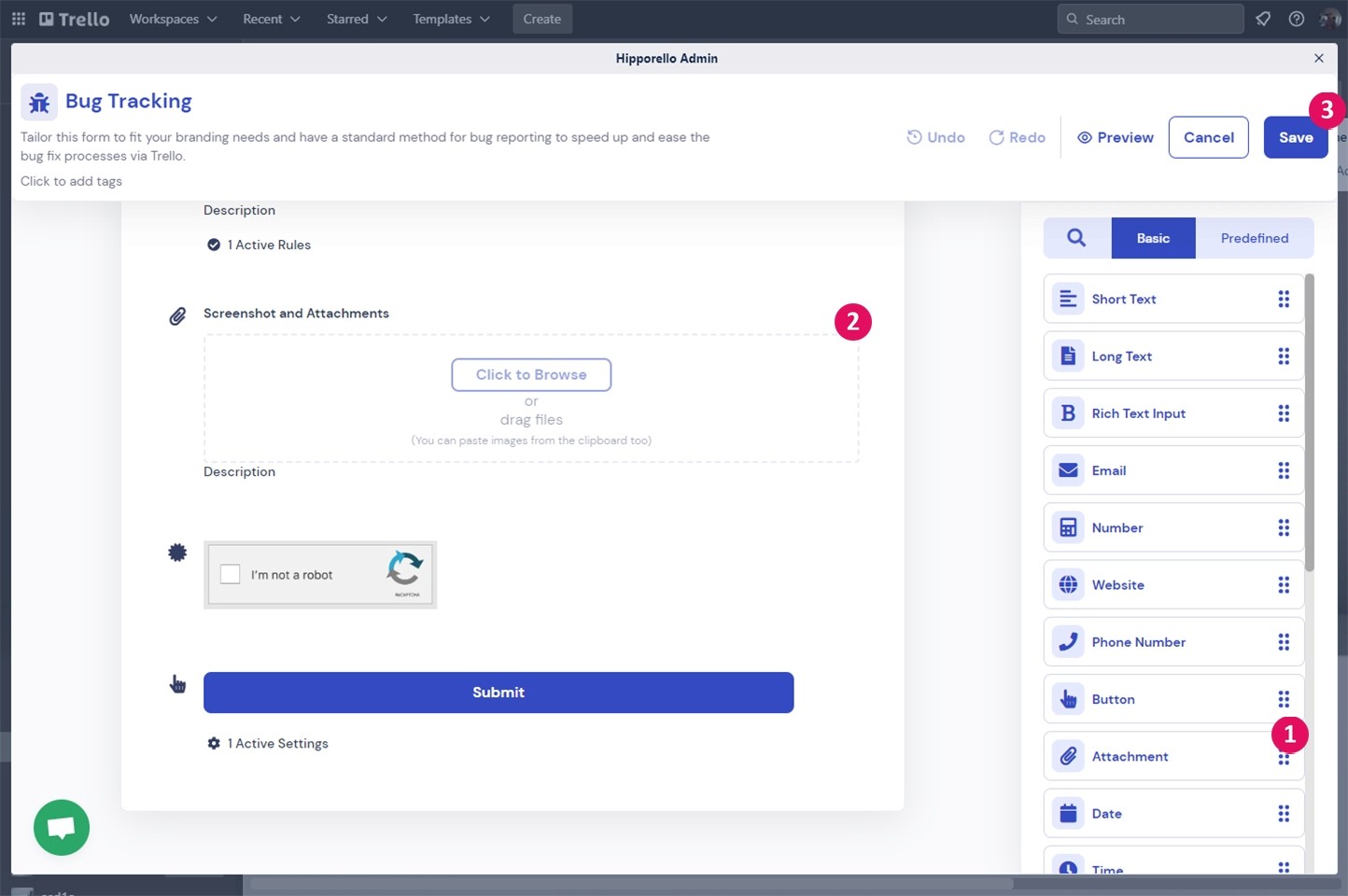What is Bug Tracking?
Bug tracking is the process of identifying, recording, and managing software defects. It is an essential part of software development and quality assurance and it ensures a smooth user experience. Also known as issue tracking, it allows development teams to collect technical problems, categorize, prioritize, and resolve them efficiently.
Effective bug tracking requires a structured approach where users can submit bug reports through different channels, allowing teams to systematically address them while keeping reporters informed.
This is where bug tracking tools come into play. They help teams collect and organize issues, replicate errors, and track resolutions.
Why Use Trello for Bug Tracking?
Trello is known for being a flexible and user-friendly project management tool and it can serve as a bug-tracking system when configured correctly. By integrating Hipporello’s Service Desk Power-Up, teams can manage bug reports, communicate with reporters, and track resolution statuses—all within Trello.
With Hipporello Service Desk, you can:
Create forms using a drag-and-drop for builder or use form templates.
Connect emails to receive bug reports via email.
Automatically create unique Trello cards for each report.
Organize and track bug reports using Trello lists.
Assign Trello cards to team members for resolution (automatically or manually).
Communicate directly with bug reporters via email from within Trello.
Collaborate with your team members on Trello efficiently on resolving bugs.
Setting Up a Bug Tracking System in Trello
Step 1: Create a Bug Tracking Workflow
To get started, set up a Trello board dedicated to bug tracking. Add the members involved in the process and define lists to categorize the status of bug reports, such as:
New Reports – Newly submitted bugs awaiting review in the first list of the Kanban.
Under Investigation – Reports being analyzed by the team .
In Progress – Bugs the team is working on.
Resolved – Fixed bugs awaiting final confirmation.
Closed – Verified and completed bug reports, issue closed.
Step 2: Capture Bug Reports with Hipporello Forms
Hipporello Service Desk provides a built-in bug report form that allows users to submit detailed bug reports directly to your Trello board. You can also create custom forms tailored to your needs using a drag-and-drop editor.
The form typically includes fields such as:
Basic contact information
Browser and operating system details
Screenshots of the issue
Any other useful attachments
Details/Steps to reproduce the bug
Once submitted, the report automatically generates a Trello card, placing it in the appropriate list for the team to triage.

Step 3: Publish the Form on your Client Portal or Embed the Bug Report Form on Your Website
You can easily embed the bug tracking form on your website or app with a single line of code. Simply copy and paste the provided HTML snippet between <body></body> tags, allowing users to submit bug reports without leaving your platform.
Use Trello as a Service Desk
Start for free - No credit card required
Step 4: Manage Bug Reports and Communicate with Reporters
After a bug report is received, Trello’s Kanban system makes it easy to manage the report. You can:
Assign team members manually or automatically to investigate and resolve the issue.
Move cards through the Trello lists the the status of the issue changes.
Discuss issues internally by commenting on respective Trello cards.
Send emails to reporters when you need additional details directly from Trello.
This approach allows you to keep all communication and issue tracking in one place, and streamlines the resolution process.

Step 5: Attach Screenshots and Additional Information
While reporting a bug, users can attach screenshots, logs, or other relevant files to Trello cards to make debugging easier for the team. This ensures that developers have the necessary context and information to reproduce and resolve the issue in the shortest time possible.

Trello vs Traditional Bug Tracking Tools
Trello offers a lightweight and intuitive approach to bug tracking, allowing you to keep the all the work in Trello:
Ease of Use: Combined with Hipporello, Trello offers a very user-friendly and easy-to-set up bug tracking system. Traditional tools like Bugzilla are more complex and require more effort to get started with.
Customization: Customizing the forms, process, automatic assignment of members and labels, etc is easy at Hipporello.
Best For: Hipporello's Service Desk is best for small-to-medium teams, instead of large teams.
Automation: You can automate messages to bug reporters, assign members and labels, move reports across lists automatically, and update custom fields, i.e. for priority level.
If you're part of a team looking for a simple, flexible, cost-effective and collaborative approach, Trello with Hipporello Service Desk is an excellent option.
Final Thoughts
Bug tracking is essential for maintaining software quality, and Trello—enhanced with the Hipporello Service Desk Power-Up—provides a seamless way to capture, manage, and resolve bugs collaboratively.
If your team needs an easy-to-use, low-maintenance bug tracking system that integrates smoothly into your workflow, give Hipporello Service Desk a try. You can start for free and explore its capabilities with a long test run.

Start for free - No credit card required
More From Hipporello






